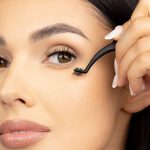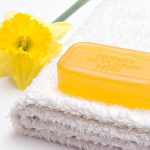Discoloration, wrinkles, pigmentation spots and other imperfections are many women’s nightmare. If you have similar problems, then you should try out a cosmetology treatment with the use of ferulic acid. Will it help your skin? See for yourself!
Ferulic acid – what is it?
Ferulic acid is a cinnamic acid derivative that dissolves in water and ethanol. In its natural form, it can be found in: nuts, coffee beans, oats, wheat, rye, beetroot, corn and bark, leaves and seeds of conifers. Ferulic acid is widely used in cosmetology, and its basic action is to prevent discolouration.
What are the properties of ferulic acid?
Ferulic acid is widely used:
- it has anti-oxidating properties and slows down the ageing process of the skin;
- protects against the harmful effects of UV rays, smog and polluted air;
- it helps get rid of free radicals and inhibits the negative impact of poor diet, improper care and the use of stimulants (such as, cigarettes, alcohol);
- removes inflammation, helps in the treatment of acne and lightens discolorations;
- it has anti-inflammatory and photoprotective properties;
- helps in the process of collagen and elastin stimulation.
What does the ferulic acid treatment look like?
During aesthetic medicine treatments, ferulic acid is used at a concentration of 12%, along with vitamins A, E, and hyaluronic acid. It is also used during chemical peels. Such treatments are recommended for people who want to delay skin ageing, make wrinkles shallow and lighten discolourations. If you have freckles, acne or oily skin on the face, the treatment with ferulic acid is just for you. This substance is also used in needleless mesotherapy treatments, during which collagen and elastin fibres are rebuilt.









Leave a Reply